#myth debunking
Text
The Great leap forward
The Great Leap Forward (GLF) and the associated famine in China from 1959-1961 have often been subjected to significant myth-making, much of which exaggerates the death tolls and distorts the causes and outcomes. Commonly, figures as high as 30 to 45 million are cited, largely based on estimates from Western demographers like Judith Banister and Frank Dikötter. However, deeper analysis and more recent scholarship—particularly the work of mathematician Sun Jingxian—suggest that these numbers are highly inflated and do not account for various factors that contribute to a more realistic understanding of the famine.
Re-Evaluating Death Toll Figures
The initial myth that "tens of millions" died during the GLF has been largely debunked through more careful statistical and historical analysis. According to Sun Jingxian, the estimated death toll from the famine was around 3.66 million deaths, which includes deaths from various causes, not just starvation. This number is 8% of the 45 million figure posited by Dikötter, and 12% of Banister's estimate of 30 million. Sun’s work shows that deaths during the famine were not caused solely by starvation but included other "unnatural deaths," such as deaths from diseases exacerbated by malnutrition. This reevaluation places the famine in a context comparable to other major historical famines in China, which also had multifaceted causes rooted in poverty and ecological challenges.
A key point in Sun’s work is the differentiation between year-end registered household population and total population. If a similar methodology were applied to the U.S. during the Great Depression, it could lead to vastly inflated death toll estimates, anywhere from 67 to 170 million deaths, a number that is patently absurd. This comparison highlights the dangers of relying on simplistic population metrics without understanding the nuances of registration systems and migration patterns.
Natural Disasters and Systemic Factors
The famine was exacerbated by severe natural disasters. Droughts, floods, and other ecological crises significantly reduced grain production during the period. Claims that systemic factors like the public canteen system or the planned economy were to blame for the famine are largely based on misconceptions. For example, the public canteen system is often portrayed as a "Tragedy of the Commons" scenario, where people supposedly over-consumed resources, leading to shortages. However, this system was not widely implemented across China, and even where it was, only 22% of canteens offered unrestricted supply. Most canteens only provided extra grain for laborers during harvest seasons, making it an unlikely culprit for mass famine.
Similarly, the notion that the planned economy was responsible for the famine ignores the fact that the planned economy had been in place long before and continued after the famine without leading to similar crises. The city-oriented grain supply system is another factor often cited, with claims that urban areas drained grain resources from rural farmers. While there was some truth to this, it overlooks the reselling of grain to rural areas during the famine, which mitigated the impact of urban preferences to some degree.
Historical Context of Chinese Famines
China has a long history of recurring famines, particularly under imperial rule and during the early republican period. For centuries, China’s agrarian society was vulnerable to natural disasters, ineffective governance, and foreign exploitation, leading to regular, catastrophic famines. For example:
The Great North China Famine (1876–1879) killed an estimated 9-13 million people.
The 1907 Famine resulted in approximately 24 million deaths.
In the early 20th century, the 1928-1931 famine caused 3-6 million deaths, while the 1936-1937 famine claimed another 5 million lives.
Annual death tolls from famine ranged between 2-8 million during turbulent periods like the Warlord Era and the Sino-Japanese War, illustrating the chronic nature of famine in China prior to Mao’s leadership. It is crucial to note that the famine during the GLF was the last major famine in Chinese history, marking a significant shift from previous eras where famines were a persistent, almost annual occurrence.
Human and Political Factors
Mao Zedong is often held responsible for the failures of the GLF, but the reality is more complex. While Mao did push for rapid industrialization and agricultural transformation, many key decisions during the famine were made collectively by the Central Committee of the Communist Party of China (CCCPC). By the time the famine peaked, Mao had already retired to a secondary position, leaving leaders like Liu Shaoqi and Deng Xiaoping to oversee much of the national response. Moreover, local cadres were often reluctant to report real conditions due to the political atmosphere, further delaying disaster relief efforts.
The Sino-Soviet split also played a role, as the deterioration in Sino-Soviet relations curtailed grain imports and exacerbated the famine. Still, the Chinese government took various actions to mitigate the disaster, including grain imports, agricultural policy adjustments, and efforts to inform the public of the situation and acknowledge mistakes. While not everything worked as planned, these measures undoubtedly reduced the scale of the disaster.
Criticism of Exaggerated Narratives
Many narratives today selectively present facts about the famine, often exaggerating its scale to make ideological arguments against socialism and the Chinese Communist Party (CPC). These narratives aim to invalidate the first 30 years of the PRC and undermine the CPC’s achievements in nation-building. Comparisons between death rates in India and China during the famine are telling: in 1960, at the height of the famine, China's death rate was 2.543%, nearly identical to India's rate of 2.4%—yet only China's rate is deemed problematic in Western critiques.
Sun Jingxian's research challenges the widely held assumption that the GLF was an unmitigated disaster caused by ideological fervor. Instead, he presents a more balanced view, acknowledging that the famine was a tragic event, but one that was not unprecedented in China's history and was largely mitigated through the CPC’s efforts.
A common myth surrounding the Great Leap Forward is that the Four Pests Campaign, particularly the killing of sparrows, led to crop failures by causing a surge in insect populations, especially locusts. However, this claim is largely exaggerated.
While sparrows were targeted for eating grain seeds, they also consumed insects, and their eradication may have had some ecological impact. However, sparrows were not the primary predator of locusts, and other natural factors, such as floods and droughts, had a far greater effect on crop failures during the GLF.
Moreover, the Chinese government quickly adjusted its approach, replacing sparrows with bed bugs on the pest list by 1960. The main causes of the famine were natural disasters, bureaucratic mismanagement, and external factors like the Sino-Soviet Split, not the sparrow policy. This myth has been overstated in an attempt to discredit Mao’s policies and oversimplify the famine’s complex causes.
The Great Leap Forward famine was a tragic event, but it must be understood in the broader context of Chinese history and the global struggles of agrarian societies transitioning to modernity. The death toll, while significant, has been exaggerated in Western accounts, and many of the purported causes of the famine are based on ideological hostility rather than material analysis.
By considering the natural disasters, bureaucratic failings, and political climate that contributed to the famine, we can arrive at a more accurate picture, one that situates the GLF within a long history of famines in China. Moreover, the measures taken by the Chinese government, while not perfect, helped to prevent future famines, making the 1959-1961 famine the last major famine in China’s history—an achievement that should not be overlooked.
References/sources:
Some links may be omitted due to Tumblr limits but available here: https://voidami.wordpress.com/2024/09/13/the-great-leap-forward/
"The Great Leap Forward: Anatomy of a Historical Catastrophe" by Liu Renwen - Provides a detailed analysis of the GLF and addresses various myths surrounding it.
"Mao’s Great Famine: The History of China’s Most Devastating Catastrophe, 1958–1962" by Frank Dikötter - Examines the famine in detail, including the impact of policies and natural disasters.
"The Great Leap Forward and the Chinese Famine of 1959-1961" by Sun Jingxian - Offers a critical re-evaluation of the death toll and causes of the famine.
"Famine in China: 1959-1961" by Xue Muqiao - Discusses the impact of various policies and natural factors on the famine.
Specific Topics
"The Four Pests Campaign" - An overview of the campaign’s objectives and outcomes. Available in Historical Studies journals.
"Ecological Consequences of the Great Leap Forward: An Evaluation of the Four Pests Campaign" by Hao Yufan - Analyzes the ecological impact of the campaign, including the sparrow policy.
"The Environmental Impact of the Great Leap Forward: A Critical Review" by Li Xiaohua - Discusses the broader environmental impacts of the GLF, including pest control measures.
"Pests, Plagues, and Policy: The Great Leap Forward and Its Ecological Consequences" by Zhao Yao - Examines the myths and realities surrounding pest control during the GLF.
Famine and Death Toll
"China’s Great Leap: The Leap into the Future" by Kong Yiji - Provides statistical analysis of the famine's impact and death toll.
"The Death Toll of the Great Leap Forward: Reassessing Historical Data" by Wang Qing - Re-evaluates historical death toll estimates and their accuracy.
"Famines in China: Historical Perspectives and Modern Understandings" - Analyzes various famines in China’s history, including the GLF.
Additional Resources
Hungry Ghosts: Mao’s Secret Famine - Extensive response to claims around the Great Leap Forward and the associated famine.
Sun Jingxian and the Myth of Mao’s Genocide - Summary of Sun Jingxian’s paper and the debate on the famine's death toll.
Joseph Ball, The Mao Killed Millions Myth: The Last Word?
youtube
youtube
#Great Leap Forward#Mao Zedong#China#Chinese Famine#Natural Disasters#Political History#Socialist Policies#Food Security#Famine Management#Communism#Myth Debunking#History#Youtube
7 notes
·
View notes
Text
Bridging the Gap: The Synergy of Digital and Traditional Marketing
Introduction:
A common misconception surrounding digital marketing is that it is a replacement for traditional marketing methods. However, the reality is quite the opposite. Digital marketing complements traditional marketing and can enhance overall marketing efforts. In this blog post, we will debunk the myth that digital marketing replaces traditional marketing and shed light on how these two strategies can work synergistically to achieve optimal results.
The Evolution of Marketing:
Marketing has evolved significantly over the years, with the advent of digital technology revolutionizing the way businesses connect with their target audiences. While traditional marketing methods such as print ads, TV commercials, and billboards have been effective in the past, digital marketing has opened new avenues for businesses to reach and engage with consumers in a more targeted and personalized manner.
The Power of Traditional Marketing:
Traditional marketing methods hold a significant place in the marketing landscape. Television, radio, print media, and outdoor advertising still reach a vast audience and can create brand awareness on a large scale. Traditional marketing provides a tangible and familiar experience, allowing businesses to leverage the power of physical touchpoints, such as pamphlets, brochures, and direct mail. These methods can still be effective in reaching specific demographics, particularly in local markets or industries where traditional media is dominant.
The Rise of Digital Marketing:
With the rapid growth of the internet, digital marketing has emerged as a powerful tool for businesses to connect with their target audiences. Digital marketing encompasses various channels, including social media, search engine optimization, content marketing, email marketing, and influencer partnerships. These channels offer businesses the ability to target specific demographics, track and measure performance, and engage with consumers on a more personal level.
Complementary Strategies:
Rather than replacing each other, traditional marketing and digital marketing can work hand in hand to create a cohesive and comprehensive marketing strategy. Traditional marketing methods can generate brand awareness and reach a broad audience, while digital marketing can provide targeted and personalized experiences to engage with consumers at various stages of the buyer's journey.
Integrated Campaigns:
By integrating traditional and digital marketing methods, businesses can create cohesive and memorable campaigns that leave a lasting impact. For example, a television ad can drive viewers to a website or social media platform, where they can further engage with the brand through interactive content or special offers. Similarly, a print ad can include a QR code or a website URL, directing readers to an online experience where they can learn more and make a purchase. By combining these strategies, businesses can maximize their reach and engagement.
Data-Driven Insights:
Digital marketing offers a wealth of data and analytics that can provide valuable insights into consumer behavior, preferences, and campaign performance. By leveraging these insights, businesses can make data-driven decisions and optimize their marketing efforts across both traditional and digital channels. For example, data from digital marketing campaigns can inform decisions regarding the placement and timing of traditional advertisements, ensuring maximum impact and return on investment.
Enhanced Targeting:
One of the key advantages of digital marketing is its ability to target specific demographics with precision. Through social media platforms and digital advertising networks, businesses can define their target audience based on factors such as age, gender, location, interests, and online behavior. This targeted approach can complement traditional marketing efforts, allowing businesses to reach the right audience with the right message at the right time.
Adapting to Consumer Preferences:
Consumer preferences and habits have shifted with the digital age, making it essential for businesses to adapt their marketing strategies accordingly. While traditional marketing methods still have their place, consumers are increasingly turning to digital channels for information, entertainment, and shopping. By incorporating digital marketing into their overall strategy, businesses can meet consumers where they are and provide seamless and consistent experiences across different touchpoints.
Conclusion:
The myth that digital marketing replaces traditional marketing is debunked by the reality that these two strategies can work synergistically to enhance overall marketing efforts. Traditional marketing methods still hold value in reaching a broad audience and creating brand awareness, while digital marketing provides targeted and personalized experiences to engage with consumers at various stages of their journey. By integrating these strategies and leveraging data-driven insights, businesses can create comprehensive and impactful marketing campaigns that resonate with their target audience and drive results.
#Digital Marketing#Traditional Marketing#Marketing Strategies#Myth Debunking#Synergy#Integrated Marketing#Targeted Advertising#Data-Driven Marketing#Consumer Preferences#Campaign Effectiveness
0 notes
Text
Debunking Myths About a Mother's Postpartum Diet: Evidence-Based Insights
Explore evidence-based insights to debunk common myths surrounding a mother's diet after childbirth. From spicy foods to alcohol consumption, learn how to make informed choices for both maternal health and breastfeeding success.
Today we will explore evidence-based insights to debunk common myths surrounding a mother’s diet after childbirth. Mother and her family members are always concerned about what to include in postpartum diet and what to exclude. This can lead to a very restricted and monotonous, bland diet and reduce the interest of mother in eating simultaneously causing nutritional deficiencies. From spicy foods…

View On WordPress
#baby#baby&039;s diet#breastfeeding#dietary myths#evidence-based nutrition#health#lactation#maternal diet after childbirth#maternal health#myth debunking#newborn nutrition#nutrition#parenting#postnatal nutrition#postpartum#postpartum diet#pregnancy
0 notes
Text


˖ ⊹₊ 我可以 陪你去看星星 不用再多說明 我就要和你在一起
I'll watch the stars with you. What more is there to say, I just want to be with you.
stargazing with hotarubi ⋆˙⟡
couldn't decide if i wanted the text or not so here have the textless version as well asdjkflhaksj
#tokyo debunker#lin doodles#haku kusanagi#subaru kagami#zenji kotodama#zenji is yapping the entire time btw#he's doing a dramatic retelling of the tanabata cowherd and weaver maiden myth#haku's listening but subaru's falling asleep (it's way past his bedtime)#ANYWAY this song been stuck in my head FOREVER CHRIST had to do this to get it out of my head#gna try setting it as a wallpaper rn hope it works lol#also scrolled through my procreate gallery to look for this draft jn and realised like a solid 70% of what i draw#is just hotarubi.....#not like i'm biased or anything but haha....... unless
115 notes
·
View notes
Note
Just wanted to let y kno that people are accusing you of being a zionist and all that? Idk if its true but im assuming it isnt
I support Palestinian liberation, think the government of Israel is absolutely committing a genocide (& is awful in many other ways), and that Western nations are invested in Israel to help further their own imperial goals in West Asia. However I also think this situation is not 1:1 comparable with Western colonial states like America & I'm concerned with how many people (largely white, large Western people) have taken an extremely black and white view of this issue where "says nuance is important" is synonymous with "denies Palestinian oppression." There is a real and bipartisan antisemitism issue here & a lot of people are not taking seriously enough how antisemitism & the legacy of Jewish oppression shapes this issue in ways which make it fundamentally different to talking about White Christian colonization of America.
I am an anarchist & have no attachment to any state's existence. My only hope is that the war ends & a way is found to have everyone in that region (including Palestinians who have been forced from their home and current Israeli citizens) living safe, fulfilling lives in a community which is free from the control of imperialism and other forms of injustice.
#m.#ask box#i/p war#i recommend reading The Birth of Israel: Myths and Realities by Simcha Flapan#a book which palestinian scholars themselves have said is a great methodical debunking of#israel's justifications for its crimes#which was written. by a self-identified zionist!#so like while i dont identify as a zionist. there is a lot more diversity of belief in zionism than it seems
162 notes
·
View notes
Text
There’s no way ShivRome are twins actually. Shiv would’ve absorbed Roman in the womb first chance she got
#twin truthing myth debunked#(this isn’t serious btw. y’all keep on truthing)#((but you can’t tell me it’s not true))#roman roy#shiv roy#roy siblings#succession#succession hbo#noodle rambles#roy twins (placeholder tag)
155 notes
·
View notes
Text





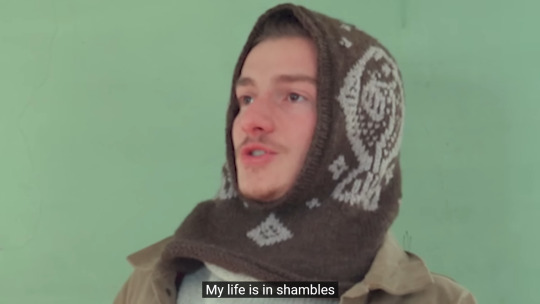
If i could go back in time, I would share these screenshots with young Milo and tell him how much of a legend he's going to be.
105 notes
·
View notes
Text
The Holodomor
Marxists do not deny that a famine occurred in the Soviet Union in 1932-1933. Soviet archives, along with various Western historians, confirm this. What remains contested is the narrative that this famine was a deliberate, man-made genocide aimed specifically at the Ukrainian people. This portrayal, pushed by nationalist factions and later Cold War propaganda, finds its roots in the disinformation campaigns initiated by Nazi Germany to showcase the “terror” of the so-called “Jewish communists” to the world.
– Socialist Musings. (2017). Stop Spreading Nazi Propaganda: on Holodomor
Anti-Communists and Ukrainian nationalists have framed the Soviet famine of 1932-1933 as “The Holodomor” (which means “to kill by starvation” in Ukrainian). This framing serves two purposes:
It implies that the famine specifically targeted Ukraine.
It suggests that the famine was intentional.
The argument posits that because it was intentional and mainly affected Ukraine, it was, therefore, an act of genocide. This interpretation was first promoted by Nazi Germany during World War II, seeking to fracture the relationship between the Ukrainian SSR (UKSSR)and the Russian Soviet Federative Socialist Republic(RSFSR). Since the 2004 Orange Revolution, the Holodomor narrative has regained momentum, serving nationalist goals by reinforcing Ukrainian identity and fostering the country’s independence from Russia.
The Geographical Reality: Famine Across the USSR
A central problem with the Holodomor narrative is its assertion that Ukraine was the primary target. The reality is that famine spread across large swathes of the Soviet Union. Regions like Kazakhstan were, in fact, more devastated on a per capita basis than Ukraine, while Soviet Russia also suffered severe losses. This broader Soviet famine refutes the genocide argument, showing the effects of poor agricultural policies and environmental disaster across multiple Soviet regions, not just Ukraine (Tauger, 1992).
The rise of the Holodomor narrative in the 1980s coincided with Ukrainian post-Soviet nation-building. Some scholars, like Peter Novick, argue that this narrative reflects a form of “Holocaust Envy,” where nationalists attempt to downplay other atrocities (such as the Holocaust) to elevate their own experience as uniquely tragic. The Ukrainian scholar Lubomyr Luciuk has controversially claimed that the Holodomor was “a crime against humanity arguably without parallel in European history,” reflecting the extreme lengths taken to establish this narrative.
Second Issue
Labeling the famine “man-made” implies that it was deliberate, which was not the case. Although human factors contributed, the main causes of the famine were bad weather and crop disease, which resulted in poor harvests and pushed the USSR into crisis.
Furthermore, kulaks (wealthy peasants owning land, livestock, and tools) who resisted collectivization policies played a significant role in worsening the situation. In the early 1930s In response to the state-enforced requisitioning of grain, some kulaks engaged in active sabotage, burning crops, killing livestock and damaging equipment to resist the Soviet government’s efforts. Poor communication and delayed action across various levels of government also compounded the crisis, leading to greater devastation.
Quota Reduction
What undermines the genocide argument most significantly is the Soviet government’s response once the famine began. Contrary to the narrative that the USSR deliberately starved its citizens, evidence shows that the Central Committee reduced grain procurement quotas after realizing the gravity of the 1932 harvest failure. In May 1932, the planned procurement quota was reduced by 30%, and subsequent decrees further reduced the quotas for various agricultural products. Despite the challenges, Soviet authorities made active efforts to address the crisis, although their actions were far from sufficient (Mark Tauger. (1992). The 1932 Harvest and the Famine of 1933).
Notably, revisionist scholars like James Mace and Robert Conquest have downplayed or entirely ignored these quota reductions, instead focusing on the famine as proof of Soviet intent to starve Ukrainians. Conquest’s work, for example, avoids any discussion of the lower grain procurement targets, despite Soviet records showing that the government tried to mitigate the famine’s effects (Davies & Wheatcroft, 2004 Link).
Rapid Industrialization
Soviet policies of rapid industrialization and collectivization contributed directly to the famine. However, had these efforts not been pursued, the Soviet Union would have faced far greater difficulties later. Stalin’s famous statement in 1931—”We must make good this distance in ten years. Either we do it, or we shall go under”—proved eerily prophetic when Nazi Germany invaded the Soviet Union just a decade later.
By 1941, the USSR had built a robust industrial base, which was essential in its defeat of Nazi Germany. The rapid industrialization of the early 1930s allowed the Soviet Union to produce the weapons, tanks, and planes that would eventually win the war. In Hitler’s own words from 1942,
“All in all, one has to say: They built factories here where two years ago there were unknown farming villages, factories the size of the Hermann-Göring-Werke. They have railroads that aren’t even marked on the map.”
– Werner Jochmann. (1980). Adolf Hitler. Monologe im Führerhauptquartier 1941-1944.
Thus, while the cost was heavy, including the famine, this industrial base saved the USSR from destruction during World War II.
Collectivization also built resilience among the civilian population:
The experts were especially surprised by the Red Army’s up-to-date equipment… Russians met the German blitzkrieg tactic by two methods, both requiring superb morale. When the German tanks broke through, Russian infantry would form again between the tanks and their supporting German infantry… The Germans found no “soft civilian rear.” They encountered collective farmers, organized as guerrillas and coordinated with the regular Russian army.
– Anna Louise Strong. (1956). The Stalin Era
Conclusion: A Tragedy, Not Genocide
While there is no doubt that the Soviet government mishandled the famine, leading to tragic and widespread suffering, evidence does not support the conclusion that the famine was an act of genocide. The conditions leading to the famine were driven by a mix of environmental crises, poor policies, and sabotage—not by a deliberate attempt to wipe out the Ukrainian population. The Holodomor narrative has been shaped over decades by external propaganda efforts and nationalist revisionism, but a balanced view reveals a broader Soviet tragedy, not an ethnic genocide.
Sources: https://voidami.wordpress.com/2024/09/08/the-holodomor/
7 notes
·
View notes
Text
Demystifying Age: The Inclusivity of Digital Marketing Across Generations
Introduction:
A persistent myth surrounding digital marketing is that it is only effective for young audiences. However, the reality is that digital marketing has the potential to reach audiences of all age groups, as people of all ages are active online. In this blog post, we will debunk the myth that digital marketing is limited to young audiences and shed light on how businesses can effectively target and engage with diverse age groups through digital channels.
The Digital Landscape:
The advent of technology and the widespread use of the internet have transformed the way people of all ages interact, communicate, and consume information. Today, people across generations, from Generation Z to Baby Boomers, are active online, making digital marketing an essential tool for businesses to reach and engage with their target audiences.
Accessibility and Adaptability:
One of the key advantages of digital marketing is its accessibility and adaptability across different age groups. Digital channels such as social media, search engines, email, and websites are user-friendly and can be easily accessed by people of all ages. Businesses can leverage these channels to create targeted and personalized marketing campaigns that resonate with their specific age demographics.
Understanding the Audience:
To effectively reach different age groups, businesses must understand the unique characteristics, preferences, and behaviors of each demographic. Generation Z, for example, is highly tech-savvy and values authenticity and social responsibility. Millennials, on the other hand, prioritize convenience and value social proof. Generation X tends to respond well to personalized and informative content, while Baby Boomers value trust, reliability, and quality. By tailoring their digital marketing strategies to align with these characteristics, businesses can effectively engage with audiences of all age groups.
Reaching Younger Audiences:
Digital marketing provides businesses with powerful tools to engage with younger audiences. Social media platforms such as Instagram, TikTok, and Snapchat are particularly popular among Generation Z and Millennials. By creating visually appealing and engaging content, utilizing influencer partnerships, and leveraging user-generated content, businesses can effectively capture the attention and loyalty of younger audiences.
Engaging with Older Audiences:
Contrary to the myth, older audiences are also active participants in the digital landscape. Baby Boomers and Generation X are increasingly embracing technology and using digital channels for various purposes. Businesses targeting older audiences can leverage email marketing, search engine optimization, and content marketing to provide valuable information, address their needs, and build trust. Additionally, social media platforms like Facebook and LinkedIn have a substantial presence of older users, providing businesses with opportunities to connect with and engage this demographic.
Tailoring Content and Messaging:
To effectively engage audiences of all ages, businesses must tailor their content and messaging to resonate with each demographic. Younger audiences may respond well to more casual and visually appealing content, while older audiences may prefer more informative and professional content. It is crucial to speak the language of each age group and address their unique needs, pain points, and aspirations.
Embracing Multichannel Marketing:
An effective digital marketing strategy targeting audiences of all ages should embrace multichannel marketing. Different age groups have preferences for different digital channels. While younger audiences may spend more time on social media, older audiences may rely on search engines and email. By utilizing a mix of channels and optimizing content for each platform, businesses can maximize their reach and engagement across various age groups.
Continuous Learning and Adaptation:
Digital marketing is a dynamic field that evolves rapidly. To effectively reach audiences of all ages, businesses must stay updated with the latest trends, technologies, and preferences of different age groups. Continuous learning, experimentation, and adaptation are essential to ensure that marketing efforts remain relevant and effective across generations.
Conclusion:
The myth that digital marketing is only for young audiences is debunked by the reality that people of all ages are active online and can be effectively reached through digital channels. By understanding the unique characteristics and preferences of each age group, businesses can tailor their digital marketing strategies to engage with audiences of all ages. By embracing accessibility, adaptability, and continuous learning, businesses can leverage the power of digital marketing to build meaningful connections, drive engagement, and achieve success across generations.
#Digital Marketing#Audience Targeting#Age Groups#Online Presence#Myth Debunking#Inclusivity#Generational Marketing#Social Media Marketing#Personalization#Engagement Strategies
0 notes
Text
Debunking 7 Myths About Autism
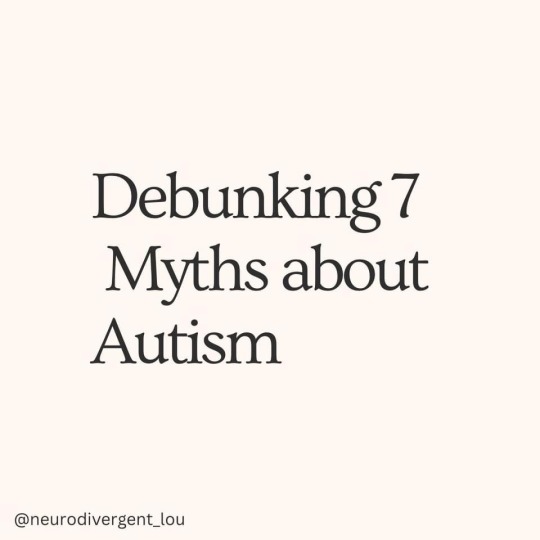
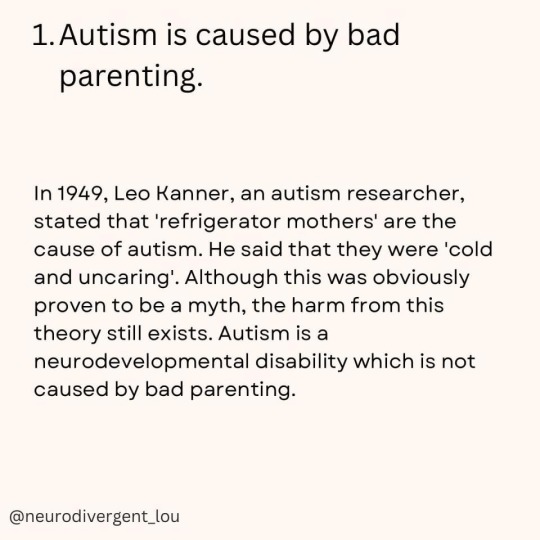
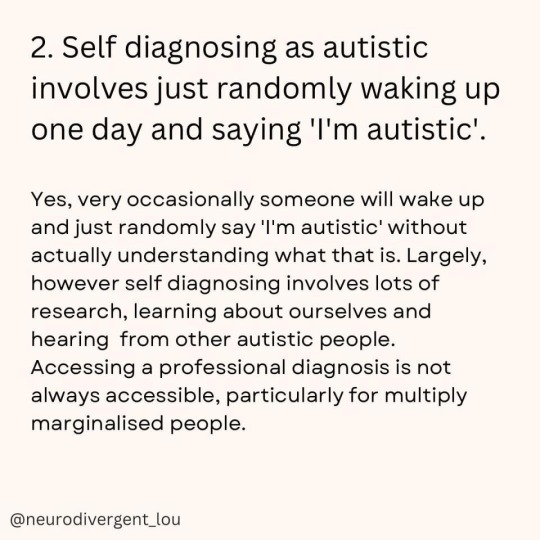
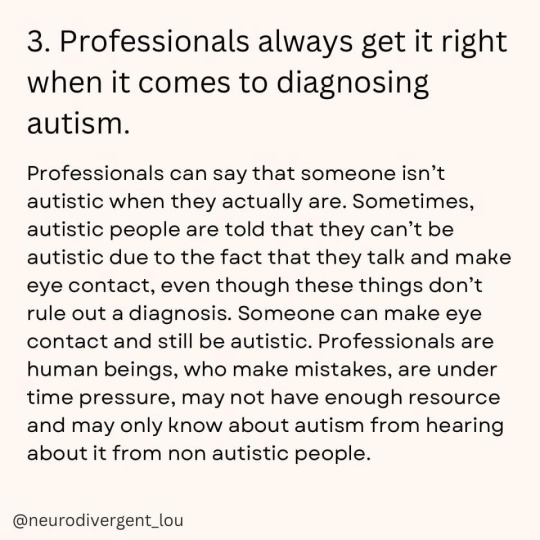
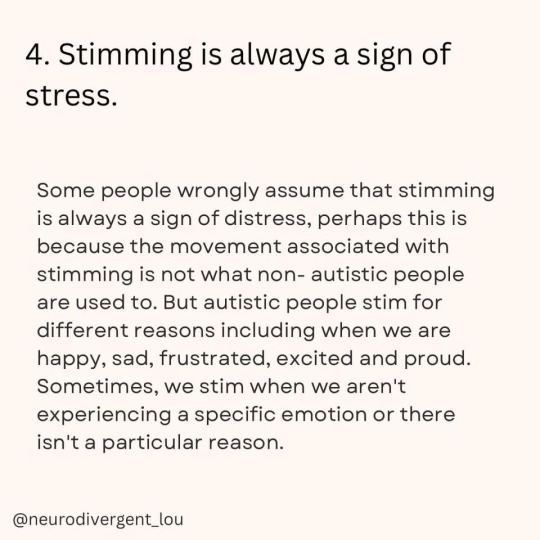
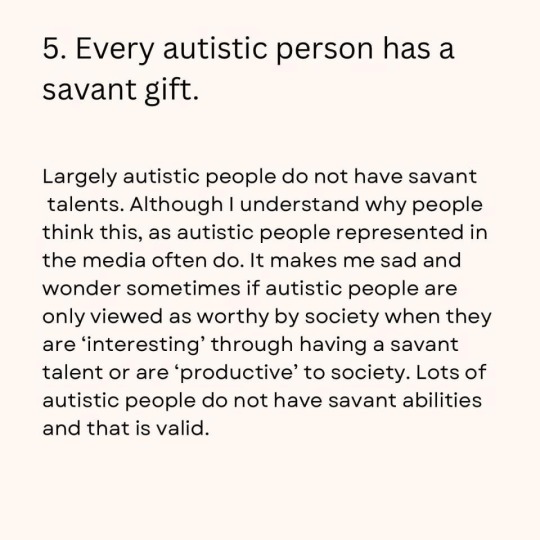

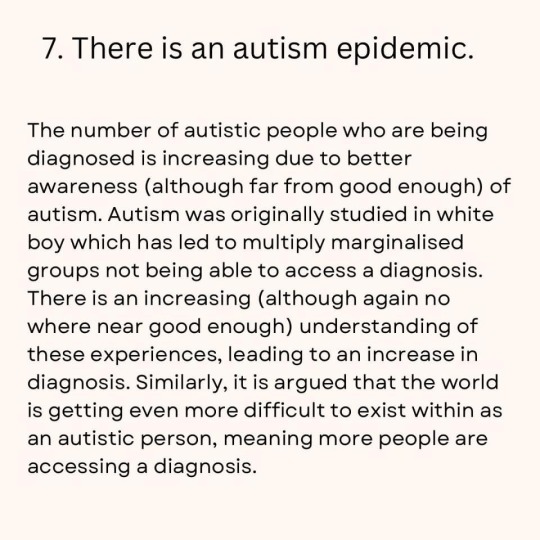
Neurodivergent_lou
#autism#actually autistic#debunking myths about autism#neurodivergent lou (facebook)#autism advocacy#feel free to reblog/share#tw bright colors#tw eye strain
235 notes
·
View notes
Photo










SLIPPERY SLOPE, BROTHER. JUST WAIT AND SEE.
#spnedit#samedit#samrubyedit#sam x ruby#debunking the myth that sam was mainly concerned with saving victims of possession in s4#i really hate how often this storyline gets flattened in either direction because it's one of my favorites#and this is mainly a fandom thing though the show does skirt around some issues#like how sam's obsession with killing lilith necessarily implies also killing the child she is possessing#there's a general unwillingness to discuss a lot of the implications here#the goal was killing demons not the exorcisms. instead of reciting it when he fails to do it with his mind he lets ruby kill the guy#even ruby is impressed with how much this boy can lie to himself#supernatural#the boy with the demon blood#you had it in you the whole time dumbo#s4#*
443 notes
·
View notes
Text
Gotten a few asks about this so let me clarify:
Atlantis the Lost Empire is NOT Nazi propaganda nor is it an endorsement of Nazi beliefs.
It's another example of a piece of media that has taken inspiration from a conspiracy theory which unfortunately has ties to the Nazis' obsession with proving their bonkers Aryan race theory.
The Nazis were obsessed with finding and creating ANY sort of historical/traditional link to validate their agenda, no matter how utterly ridiculous or entirely separate from reality that link was. They were obsessed with the mystical and the occult. Pseudo-science and pseudo-archaeology were their literal bread and butter.
In this instance, Plato's story of a sunken ancient city is not special for being co-opted for the Nazi's purposes. What has lead Atlantis to becoming a popular conspiracy theory in modern times is due in part to the steady popularization of pseudo-science as well as bad faith actors promoting a racist conspiracy theory as genuine fact.
The majority of conspiracy theories you hear about today actually have roots in fiction. For example, the Hollow Earth conspiracy theory finds it's origins from science fiction novels dating back to the 1800s. The Philadelphia Project can also trace its origins to a UFO writer who claims he was receiving secret confidential intel from a former US mariner. And yet there are are people who genuinely believe there is a secret world hidden in the center of the earth and that the US government was experimenting with and succeeded in creating a portal to another dimension.
So is the case with Atlantis. Atlantis: The Antediluvian World was written by Ignatius Donnelly in 1882 as a means to express his desires for a populist government and world. He was extremely misguided in his belief that Plato's story was factual and he employed the use of hyperdiffusion-a popular method used in countless conspiracy theories-to argue that all ancient societies were basically all descended from one even more ancient people.
Or in the Nazi's own terms: "An ancient master race."
Bad actors like Graham Hancock and Ancient Aliens further popularized the Nazi's conspiracy theory (as well as many others) and Donnelly's books by spreading mass disinformation across a global scale and we are all suffering for it.
As I've already stated before, Atlantis the Lost Empire takes superficial inspiration from the conspiracy theory in the same way that Stranger Things takes inspiration from the Montauk Project. Many popular sci-fi films, tv shows, books, and video games are littered with references and nods to conspiracy theories. Everything from Men in Black to The X Files to the SCP Foundation.
If you are interested in seeing how convincing conspiracy theories can get and their very real ability to destroy actual lives, I recommend watching American Conspiracy: The Octopus Murders. It perfectly showcases how conspiracy theories can suck you in and how people can easily take advantage of you once they break down your ability to distinguish fiction from reality.
My only caveat with the documentary is that I really wish the creators had emphasized even more plainly to the audience that the Octopus Murders is an actual conspiracy theory instead of leaving the question somewhat open ended. Especially in regards to Danny Casolaro's death.
I would also highly recommend watching Milo Rossi aka miniminuteman's videos as his channel is dedicated solely to debunking various archaeological conspiracy theories as well as providing fascinating education on a variety of historical topics. I really cannot overstate how wonderful his Awful Archaeology series is.
I'm going to link a few of my favorites here:
youtube
This is the first of a multiseries debunking Graham Hancock's Ancient Apocalypse series.
youtube
This is Part 1 of 2 of him debunking one of the most notorious TikTokers who makes a living off of spreading mass disinformation.
I would be remiss not to mention Atun-Shei Film's amazing channel as well as Lady of the Library.
youtube
youtube
youtube
I would also recommend Kaz Rowe's channel as they provide stellar information on a wide variery of historical topics.
youtube
youtube
Tldr; Atlantis the Lost Empire and the films creators' did not set out to promote Nazi beliefs. They simply took inspiration from a popular conspiracy theory and made it something entirely unique and separate from the Aryan race agenda.
#dreamer talks#atlantis#atlantis the lost empire#conspiracy theory#conspiracy theories#psa#history#world history#debunking myths#debunking conspiracy theories#this is a public service announcement#edits will be made as needed#feel to correct me on any of these points#or to offer your own recommendations#Youtube#long post#long post is long#fuck graham hancock#fuck ancient aliens
27 notes
·
View notes
Text
Analysis of shipping: Found family and pseudo-incest?

Last year I was requested this rebuttal to detractors, but it took a long time to make because it was hard to pinpoint where these arguments came from
But, after one perceptive individual nailed it right on the head, I finally had something to work with
So, let's start with the argument: "These characters can't end up together because they're like family/siblings, so that would be incest"
This isn't unique to one single fandom. Antis had used this reasoning against NaLu and similar pairings in the past, based on the fact Natsu and Lucy belonged to the same guild, a community that treated its members as "family"

Needless to say, they stopped using it after seeing how Mashima made pairings like Gajeel and Levy, or Gray and Juvia, pretty much canon. Making it clear that romantic relationships between members of this particular circle or community were perfectly fine (That doesn't mean cheating is fine though!).
But, this argument still persists in other fandoms. One Piece is not the exception, where the anti-LuNa crowd constantly tries to paint all romantic potential between Luffy and Nami as "incest" because they're "siblings."
Let us address something first, what's incest?
"Sexual intercourse between persons so closely related that they are forbidden by law to marry"
- Merriam-Webster, 2024
"Marriage or sexual intercourse with a relative within the prohibited degree of consanguinity. In other words, incest is sexual contact between close blood relatives"
- LII / Legal Information Institute, 2024
After 1000+ chapters worth of story, nothing implies Luffy and Nami are related by blood. So, where does the argument comes from?
In reality, antis are using a concept people don't often hear about: pseudo-incest
It's not a widely known term, in fact, it's not even in the Oxford English Dictionary (OEA), the Cambridge Dictionary, or Merriam-Webster.
However, we can still find some defintions that helps us to understad what do LuNa detractors mean with this?
"Sexual involvement between family members who are not blood relations (e.g., siblings by adoption, stepparents and stepchildren, in-laws)."
- Wiktionary, 2024
Once, again we hit another wall, since Luffy wasn't adopted by Nami's family, nor Nami was adopted into his. So, why do antis claim they're "like" siblings?
Let's go from the minor statement to the big one. The first argument is that "The have a sibling-like dynamic"
This is one is odd, because it can come from actual unawareness about the nature of relationships, or the malicious use of the common traits seen in all sorts of human connections
After all, all healthy relationships, either being with relatives, companions, or potential romantic partners, are defined by affection, shared values, support, and sometimes a little bit of discord and/or conflict
If we were to use these traits to label the connection between two characters as that of "siblings," we could describe a lot of official pairings (and potent relationships) from a huge lot of stories as "siblings" instead of lovers/spouses.
Let's use a potent relationship as example: Sabo and Koala feel affection for one another, share similar values, support each other, and may have an argument from time to time...

...does that make them "siblings"? What about Ace and Isuka? Does the combination of affection, support, and occasional conflict rule out any possibility of a relationship upgrade?
If we apply this "measurement" to official pairings from other series, we're likely to jump to similarly flawed conclusions about their relationships.
However, even if there are similarites, there are several differences. For bonds outside our family circle. we may see chosen affinity, sometimes a greater attachment and/or emotional codependecy, a strong passion, and even a deeper sense of compromise coming from the willing choice of those involved.

Potent relationships have all of this, even if they're yet to become canon. And due to their emotional chemistry, LuNa seems more like a deep companionship with the potential to evolve rather than a sibling-like bond

However, that was just the minor statement from western fans. We may deduce some say this because they can't picture a romantic relationship without one (or both characters) being a total simp; perhaps they're so used to the "loveable perv" trope, that their idea of romance relies how horny the characters act with one another; or maybe they just too enamored with the cool good-looking buff guy to acknowledge anything deep, but I digress...
Still, we're yet to address the elephant in the room, the bigger argument, which is a combination of two things:
Just like some anti-NaLu fans did ages ago, a lot of anti-LuNa fans take their "sibling" argument from the same place every other permutation of this reasoning came from, a misuse of another concept: Family of choice
Family of choice, Chosen Family or Found Family, all refer to a group of people who willingly stick together to provide each other with the sense of community and belonging, as well as a feeling of affection, joy and security inherent to a functional family, without being related by blood.
It's seen as an alternative to those who faced rejection from their biological family, or society itself, and even to people who lost their relatives to tragedies or disasters.
It's a useful literary device to develop characters due to how flexible it is, given that members of these groups don't need to fill particular roles for their relationships to work, which provides authors with a lot of freedom in terms of writing.
However, some detractors have been abusing the "family" part of the term to argue against pairings that have enough development and history together for a natural relationship upgrade. How?
By limiting each character to a specific role: Father, Mother, Sibling, etc.
This allows them to claim, that characters within "Found Families" cannot become couple because that would be pseudo-incest.
As some people already noticed, this makes no sense; it replaces the versatility of the trope with a far more rigid, static, and limited form of narrative; and goes against what the idea of "Found Family" was supposed to be, which is an alternative to "family," not a carbon copy of the traditional family structure.
So, how does this argument survives logic and reason?
Well, here's the elephant in the room: in the SBS Volume 48, Oda was asked the question: "If the Straw Hats really were an actual family, who would be the dad, and who would be the mom?"
The following was Oda's answer:
Dad: Franky (Thug)
Mom: Robin
First Son: Zoro
Second Son: Sanji (Punk)
Daughter: Nami
Third Son: Usopp
Fourth Son: Luffy
Youngest: Chopper
In the SBS Volume 50, Oda added Brook would be the "Grandfather" "If you Likened the Crew to Family".
Here we have another example of a quote taken out of context, because the question was 'if they really were an actual family', and Oda later framed his answer as "Position in the crew if they were a family."
It was never about the strawhats being "an actual family," it was merely mindless fun with a "what if." To drive that point home, Sanji still gets horny for both Nami and Robin, yet nobody in their right mind would accuse him of lusting after his "sister" and "mother," because they're not actual relatives.
And this leads us to a couple of plot twists: all of this started because of the song "Family" performed by the strawhats seiyuus which, while invoking the "Found Family" trope, includes the following statement:
"We're not relatives… we're not even siblings!" (親戚じゃなくて 兄弟じゃない)
Which pretty much kills the "they're like siblings" argument used by detractors to liken LuNa to pseudo-incest.
The second plot twist comes from the SBS Volume 99, Oda says that if the cew was an actual family Jinbei would be the "father," replacing Franky who would now be given the position of "pervy granny"
This proves two things. First, that such "positions" are neither "fixed" or "absolute," they're malleable and can be changed or altered at any given moment.
Second, that this "Family" thing amounts to a mere joke, it's just a silly little game with no real impact on the story and characters. Although the idea of Frobin Vs. Jinbin(?) sounds amusing, but I digress.
So, what's the conclusion?
Even if the strawhats are an example of "Family of choice," that doesn't make the greatest potential relationship upgrade within the crew problematic, it all depends on how the author handles the situation. And given Oda is a top tier writer, we got nothing to worry if he decides to pull the trigger
And, despite what huge players within the community said before, Oda never claimed the strawhats were "an actual family." So any accusation of pseudo-incest, whether subtle or direct, is just the result of general ignorance, misinformation, and/or personal agendas
BONUS
There are times in manga/anime when one character refers to another as brother/sister/sibling, despite not being related.
One example would be Winry from Fullmetal Alchemist, who claimed Edward is like a "brother" to her. However, given that they're not related, nothing stopped them from falling in love, ending up together, and having children...
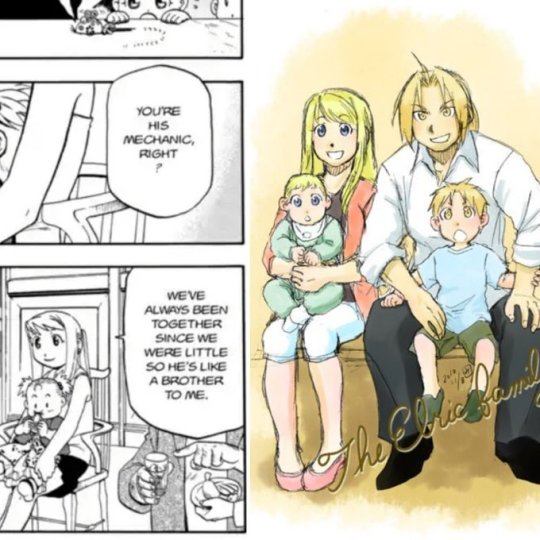
If we rely on the same reasoning used by antis, we could conclude this relationship is problematic. However, even if they have some moments when Winry goes ballistic on Ed...

...nobody in their right mind would dare to say their relationship is akin to pseudo-incest.
Oddly enough, we have a case in One Piece, when one character (Kinemon) made a similar brother/sibling claim to Tsuru, using a similar reasoning to that of Winry's...
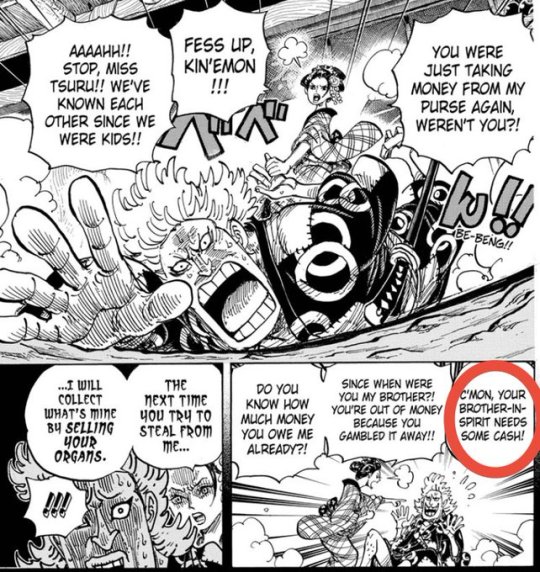
I'll give you three guesses on how these two ended up, the first two don't count
#one piece#fairy tail#fullmetal alchemist#analysis of shipping#analysis#found family#family of choice#debunking myths#ルナミ
68 notes
·
View notes
Text
Antis: But Gwynriel can't be mates because Azriel didn't sense their bond!! The bond always snaps in place for the males first!!!
Rowan Whitethorn and sapphic mate pairs: We are just a figment of your imagination ✨
(And yes, same-sex mates DO exist. We know SJM's worlds are all linked, and in TOG, Emrys and Malakai were mates, while in ACOWAR, Rhys commented that Thesan and his male lover were waiting for their mating bond to snap into place.)
Also, the more they argue that Gwynriel aren't mates, the more they agree that SJM will go down the mating bond path. Because why else would they be so fervently denying their mating bond? (And please remember these are the same people who are hollering that Elucien is boring because they're mates... So shouldn't they be desperately trying to prove that Gwynriel are mates and label them as "boring" too?) Their arguments are so contradictory that I'm always left scratching my head when I inadvertently see them (since they don't even tag properly lol).
52 notes
·
View notes
Text
Not the fucking apology video for Dabs hair and Tabithas makeup 💀💀💀
#dan and phil#dan and phil games#dip and pip#that one comment about them debunking the myth that all gay men are fashionable is incredible#i love that they acknowledged it#i did also shit myself seeing that notification tho
22 notes
·
View notes
Text
Hair inspiration: Boho Extra Curly Knotless Braids
Can we debunk this myth:
Braids is not considered a “birthday” hairstyle.
It is clearly, a lie. 😍
🏷️ touchedbyriy ( if your based in NJ, book her! )
Using @officialdarlingusa 52” prestretched hair: color 1b , you can purchase at your local Walmart or Target.
#black women in luxury#classy black women#black women in femininity#feminine energy#boho knotless braids#hair inspiration#hair inspo#black girl hairstyles#black women hairstyles#knotless braids#birthday hairstyle#myth debunks#black girl magic#classy black woman#promote black business#buy black#support black business#support black hairstylist#New Jersey Braiders
127 notes
·
View notes